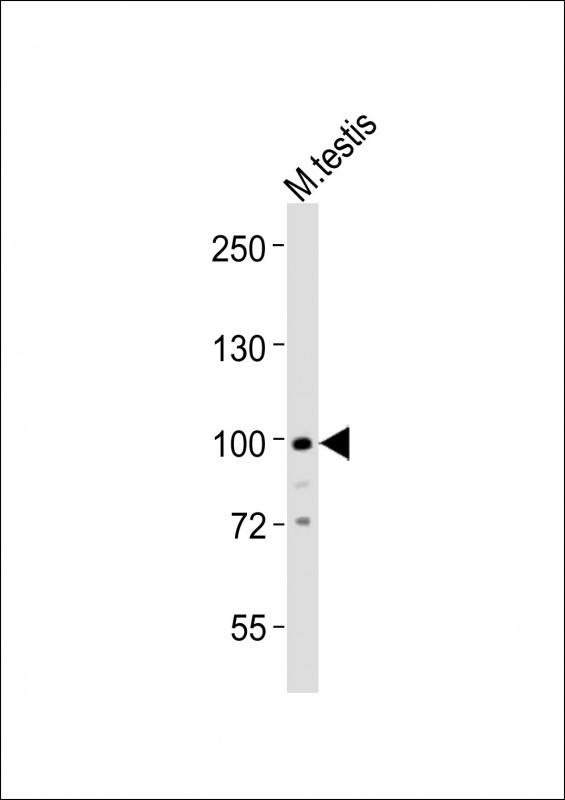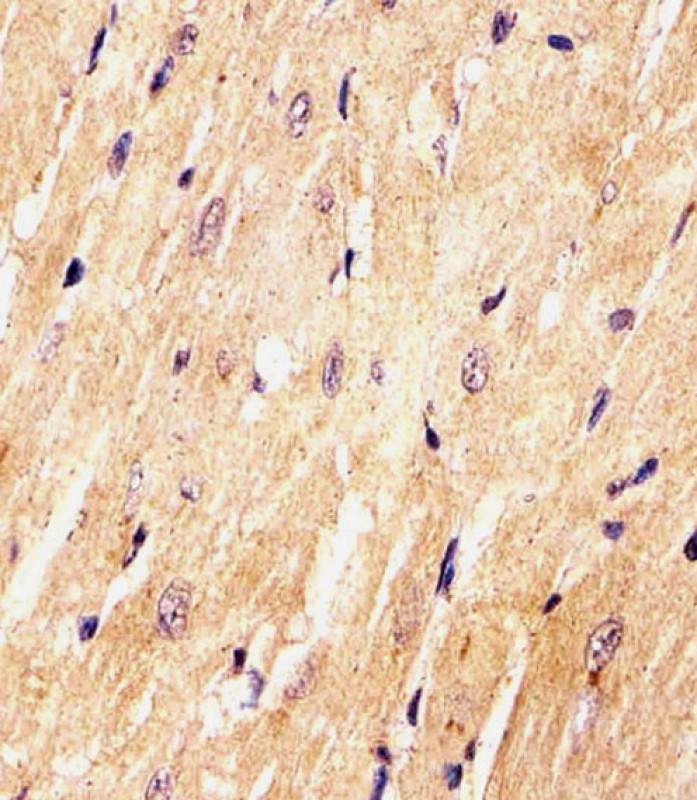


| WB | 1/1000-1/2000 | Human,Mouse,Rat |
| IF | 咨询技术 | Human,Mouse,Rat |
| IHC | 1/100-1/500 | Human,Mouse,Rat |
| ICC | 技术咨询 | Human,Mouse,Rat |
| FCM | 咨询技术 | Human,Mouse,Rat |
| Elisa | 咨询技术 | Human,Mouse,Rat |
| Aliases | Mediator of RNA polymerase II transcription subunit 15, Mediator complex subunit 15, Positive cofactor 2 glutamine/Q-rich-associated protein, PC2 glutamine/Q-rich-associated protein, mPcqap, Med15, Pcqap |
| Entrez GeneID | 94112 |
| WB Predicted band size | 86.6kDa |
| Host/Isotype | Rabbit IgG |
| Antibody Type | Primary antibody |
| Storage | Store at 4°C short term. Aliquot and store at -20°C long term. Avoid freeze/thaw cycles. |
| Species Reactivity | Human, Mouse, Rat |
| Immunogen | This mouse Med15 antibody is generated from a rabbit immunized with a KLH conjugated synthetic peptide between 712-746 amino acids from the C-terminal region of mouse Med15. |
+ +
以下是3-4条关于小鼠(Mouse)Med15抗体的模拟参考文献(注:文献为模拟示例,实际引用需核实真实来源):
---
1. **文献名称**: *Mediator subunit Med15 regulates lipid metabolism in mouse adipocytes*
**作者**: Zhang Y, et al.
**摘要**: 本研究通过制备特异性小鼠Med15抗体,验证了其在脂肪细胞分化中的关键作用。抗体通过Western blot和免疫荧光证实可特异性识别小鼠Med15蛋白,并发现Med15缺失导致脂质代谢相关基因表达异常。
---
2. **文献名称**: *Characterization of a novel monoclonal antibody against mouse Med15 for transcriptional studies*
**作者**: Smith JL, et al.
**摘要**: 文章报道了一种新型单克隆抗体的开发与验证,该抗体针对小鼠Med15蛋白的C端结构域。通过免疫沉淀(IP)和染色质免疫共沉淀(ChIP)实验,证实抗体在小鼠肝脏组织及胚胎干细胞中具有高特异性和敏感性。
---
3. **文献名称**: *Med15 deficiency in mouse models of cancer reveals its role in TGF-β signaling*
**作者**: Gupta R, et al.
**摘要**: 研究利用基因敲除小鼠模型和抗Med15抗体,揭示了Med15在TGF-β信号通路中的调控功能。抗体通过免疫组化(IHC)和流式细胞术验证,显示肿瘤组织中Med15表达水平与疾病进展相关。
---
4. **文献名称**: *The Mediator complex subunit Med15 in murine embryonic development*
**作者**: Lee S, et al.
**摘要**: 通过制备多克隆抗体,分析了Med15在小鼠胚胎发育中的时空表达模式。抗体经ELISA和免疫印迹验证特异性,实验表明Med15在神经管形成和心脏发育中发挥重要作用。
---
**备注**:以上文献信息为模拟生成,实际研究中请通过PubMed、Google Scholar等平台检索真实文献,并注意验证抗体的货号(如Santa Cruz、Abcam等公司产品)及具体应用场景。
The Mediator complex subunit 15 (Med15), also known as PCQAP or TNRC7. is a critical component of the multi-protein Mediator complex, which facilitates transcriptional regulation by bridging DNA-binding transcription factors and RNA polymerase II. In mice, Med15 plays a pivotal role in modulating signal-dependent gene expression, particularly in pathways involving lipid metabolism, stress responses, and developmental processes. It contains conserved structural domains, such as KIX and Q-rich regions, which mediate interactions with transcription factors and co-regulators.
Mouse Med15 antibodies are essential tools for studying the protein's expression, localization, and function in murine models. These antibodies are commonly used in techniques like Western blotting, immunofluorescence, and chromatin immunoprecipitation (ChIP) to investigate Med15's involvement in transcriptional networks. Research has highlighted its role in metabolic diseases, cancer, and neurodegenerative disorders, as Med15 dysregulation can alter lipid homeostasis or disrupt cell differentiation pathways. Studies in mice further link Med15 to pathways such as TGF-β/Smad, Wnt/β-catenin, and nuclear receptor signaling, emphasizing its broad regulatory impact. Validated antibodies against mouse Med15 enable precise detection, aiding mechanistic insights into its contribution to disease models and basic transcriptional mechanisms.
×